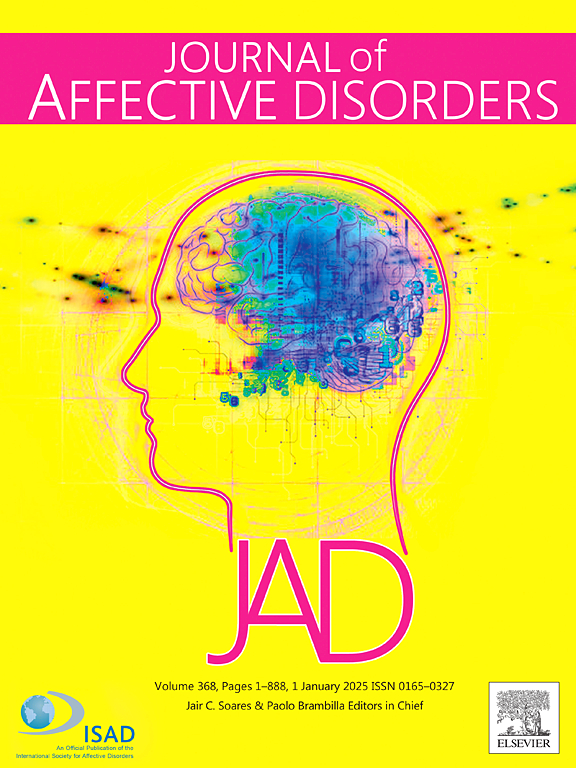Brain activation characteristics of schizophrenia and bipolar disorder-I patients during letter and category fluency tasks: An empirical study using functional near-infrared spectroscopy
IF 4.9
2区 医学
Q1 CLINICAL NEUROLOGY
引用次数: 0
Abstract
Background
Schizophrenia (SP) and bipolar disorder type I (BD-I) are severe psychiatric disorders with partially overlapping clinical symptoms, resulting in difficult differential diagnosis in many cases. Therefore, objective markers are needed to ensure diagnostic accuracy and timely treatment. One strategy with the potential to provide disease markers for diagnosis and reveal potential pathogenic mechanisms is combined cognitive testing and neuroimaging. In the current study, we compared cortical activation patterns among SP, BD-I, and healthy control (HC) groups during verbal fluency tasks using functional near-infrared spectroscopy (fNIRS) to identify distinguishing biomarkers.
Methods
Sixty SP patients, 42 BD-I patients, and 44 age- and sex-matched HCs were examined by 52-channel fNIRS during the letter fluency task (LFT) and category fluency task (CFT).
Results
Both patient groups exhibited performance deficits in the LFT and even larger deficits in the CFT compared to HCs. Patients with SP and HCs exhibited greater prefrontal cortex activation during the CFT than the LFT. Compared to HCs, SP patients demonstrated reduced prefrontal cortex activation during both the CFT and LFT, especially in bilateral dorsolateral and ventrolateral areas. In contrast, BD-I patients showed reduced cortical activation only during the CFT, mainly in right frontal lobe and bilateral superior temporal cortex.
Limitations
Cross-section study design, small sample sizes, and uncontrolled effects of medication.
Conclusions
Patients with SP or BD-I exhibited pronounced semantic deficits and frontal-temporal dysfunction during CFT performance compared to HCs. These findings provide several potential markers for distinguishing SP from BD-I as well as clues to the underlying network-level pathology.
精神分裂症和双相情感障碍i型患者在字母和类别流畅性任务中的脑激活特征:功能近红外光谱的实证研究
精神分裂症(SP)和双相情感障碍I型(BD-I)是严重的精神障碍,临床症状部分重叠,导致许多病例难以鉴别诊断。因此,需要客观的标志物来保证诊断的准确性和及时的治疗。一种有可能为诊断提供疾病标志物并揭示潜在致病机制的策略是将认知测试和神经影像学相结合。在当前的研究中,我们使用功能近红外光谱(fNIRS)来比较SP组、BD-I组和健康对照组(HC)在语言流畅性任务中的皮层激活模式,以识别不同的生物标志物。方法采用52通道fNIRS检测60例SP患者、42例BD-I患者和44例年龄和性别匹配的hcc患者在字母流畅性任务(LFT)和类别流畅性任务(CFT)中的表现。结果与hc相比,两组患者均表现出LFT的功能缺陷,CFT的功能缺陷更大。SP和hc患者在CFT期间比LFT表现出更大的前额皮质激活。与hc相比,SP患者在CFT和LFT期间均表现出前额皮质激活减少,特别是在双侧背外侧和腹外侧区域。相比之下,BD-I患者仅在CFT期间表现出皮层激活减少,主要在右额叶和双侧颞上皮层。局限性:横断面研究设计,样本量小,药物效应不受控制。结论与hc相比,SP或BD-I患者在CFT表现出明显的语义缺陷和额颞功能障碍。这些发现为区分SP和BD-I提供了几个潜在的标记物,并为潜在的网络级病理提供了线索。
本文章由计算机程序翻译,如有差异,请以英文原文为准。
求助全文
约1分钟内获得全文
求助全文
来源期刊

Journal of affective disorders
医学-精神病学
CiteScore
10.90
自引率
6.10%
发文量
1319
审稿时长
9.3 weeks
期刊介绍:
The Journal of Affective Disorders publishes papers concerned with affective disorders in the widest sense: depression, mania, mood spectrum, emotions and personality, anxiety and stress. It is interdisciplinary and aims to bring together different approaches for a diverse readership. Top quality papers will be accepted dealing with any aspect of affective disorders, including neuroimaging, cognitive neurosciences, genetics, molecular biology, experimental and clinical neurosciences, pharmacology, neuroimmunoendocrinology, intervention and treatment trials.
 求助内容:
求助内容: 应助结果提醒方式:
应助结果提醒方式:


